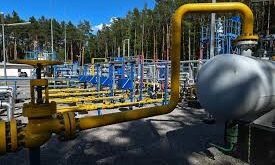With major new projects coming onstream in Australia and the rising output from the U.S. shale producers. the global liquefied natural gas (LNG) market was widely predicted to enter a period of oversupply between 2015-2020. with total supplies growing almost 50 percent.
But somewhat to everyone’s surprise. or delight if the tone of Royal Dutch Shell chief executive Ben Van Beurden is anything to judge by. “The LNG glut — conspicuously absent isn’t it?“ he is quoted as saying in the Financial Times. a glut has failed to develop.
Rather than fall. LNG prices have remained robustly firm despite the predicted flood of new supply entering the market. The reason? The other side of the supply-demand equation has been outdoing itself.
Rising imports by China has been driving growth. pushing Asian prices above $11 per million British thermal units — a three-year high. reports say.
China raised its imports of the fuel by 50 percent last year to around 38 million metric tons. according to the Financial Times. after Beijing strengthened measures designed to control pollution from coal use. overtaking South Korea as the second-biggest importer globally. behind only Japan.
The Financial Times goes on to report that Pakistan. Egypt. Jordan and a host of other countries. including in Latin America and Europe. have also become buyers. Some. like Egypt. have faced temporary fuel supply problems at home. Others. like Lithuania. have been pleased to show they have an alternative to Russian pipeline supplies. As far as the U.S. industry is concerned. Mexico. Brazil and Argentina have taken a large proportion of U.S. LNG exports since they started up on the Gulf Coast two years ago
But the U.S. has also been successful in developing a new kind of buyer.
Traditionally. LNG is sold on long-term contracts. directly to consumers. However. U.S. energy groups like Cheniere Energy have signed long-term supply deals with traders like Trafigura. who have joined other firms like Vitol. Glencore and Gunvor in securing long-term supply deals but developing a spot market for sales. The market as a whole benefits from the greater liquidity and price discovery that comes from a more active spot market. buyers benefit from having more supply options. particularly in the face of disruptions to their long-term supply contracts.
The LNG market is evolving and maturing as the fuel replaces less environmentally friendly alternatives like coal and competes head on with nuclear on price. The strength of LNG demand is coming at a time of unprecedented rollout of renewable energy generation. which suggests LNG will have a long-term future as part of the energy mix in the next decade despite the uptake of wind and solar.
 Iran Energy News Oil, Gas, Petrochemical and Energy Field Specialized Channel
Iran Energy News Oil, Gas, Petrochemical and Energy Field Specialized Channel




